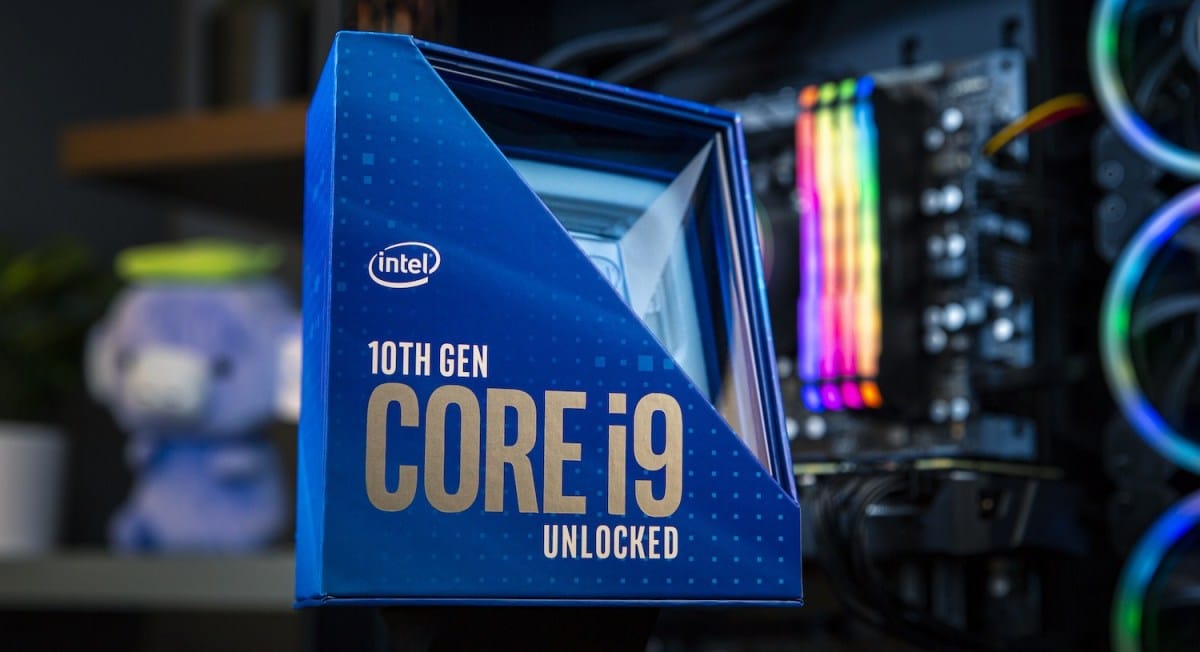Finally the moment arrives when Intel presents in society its 10th generation processors, based on the Comet Lake architecture, where we will have copies that will exceed the 5GHz barrier again.
These Comet Lake-S processors would be the last to use the 14nm manufacturing process that comes from Skylake, the following models should come under a 10nm manufacturing process or perhaps less.
Given that this manufacturing process is quite mature, it has meant that Intel has been able to increase the frequency of its entire family, managing to exceed 5GHz of operation again as the maximum frequency, in several of its models.
In addition, due to this mature and well-known process, it has been possible to increase the number of cores available in practically the entire family, managing to offer a model with 10 cores and 20 threads, as the maximum exponent.
This is the die of the top of the line model of this family, the Core i9, with their 10 cores and 20 threads.
The focus that Intel is giving to these new processors, is the frequency at which they operate and how it is relevant for games, and applications, that benefit from a high frequency in few cores, over a more parallel process in many cores. .
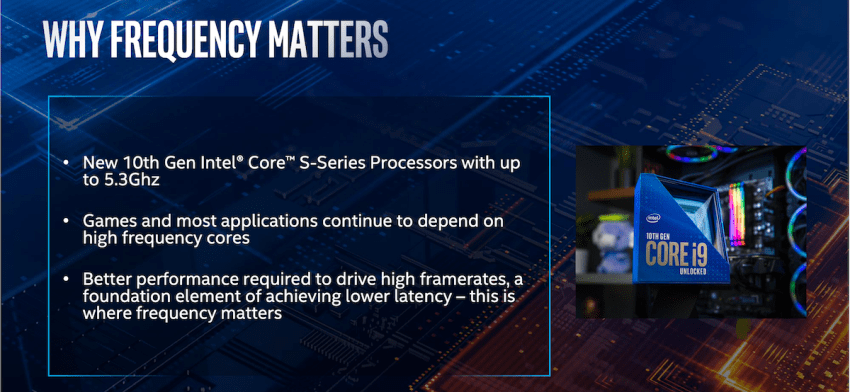
Focus is on what is relevant to obtain high FPS, and with it a low latency in games and applications, hence this family of processors comes with that in mind.
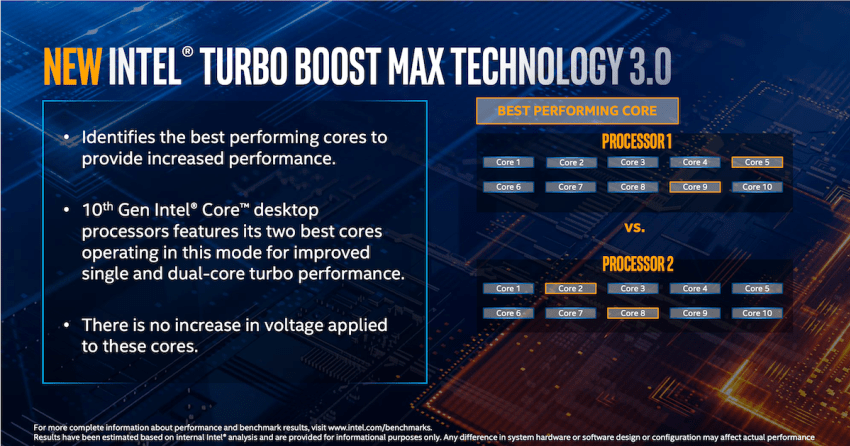
As the driver for this generation is frequency, Intel has developed a new version of its technology. Turbo Boost Max v3.0. This version, available only for Core i7, and Core i9 processors, achieves a performance improvement, increasing the clocks in 2 cores, but they are the cores that have better performance.
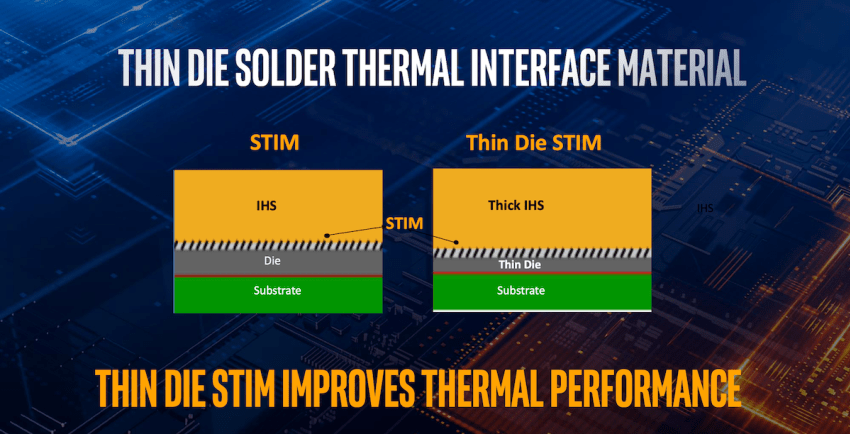
To help keep the temperature under control, with this new family die thickness decreased, in such a way that the thickness of the IHS is increased. With this, better thermal performance can be obtained, and the use of Soldering, instead of thermal paste.
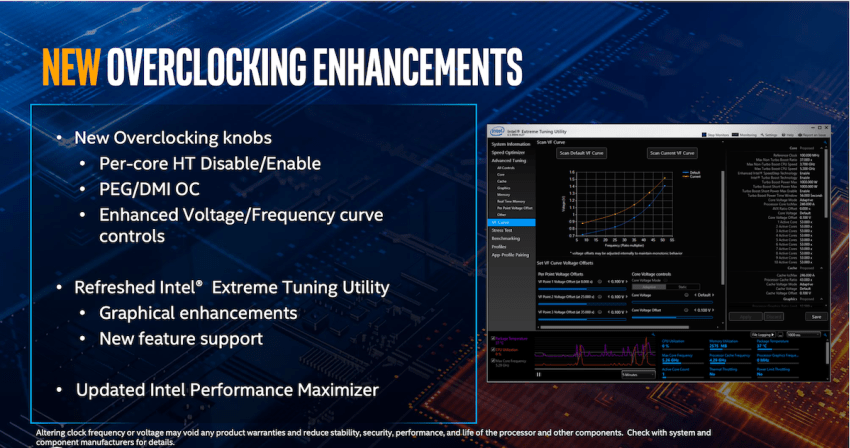
To help these processors get their maximum potential, Intel has improved its XTU (Extreme Tuning Utility) tool, with which we can now activate Hyperthreading for each core, overclock the frequency of the PCIe bus (PEG), and the bus to the Chipset PCH (DMI), also has an improved frequency / voltage curve, in this way it is possible to graphically visualize the frequency increments, for each voltage level.
All these improvements and new features are so that we can get the best overlock experience.
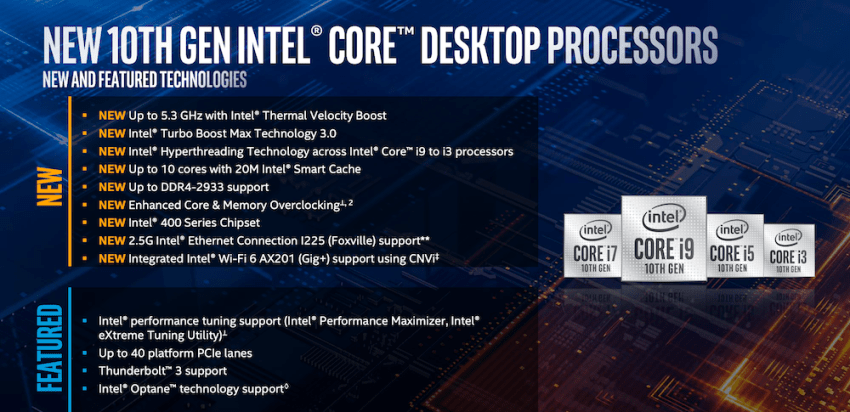
To summarize some of the characteristics of these new processors:
- Up to 5.3GHz with Thermal Velocity Boost in 1 core
- Up to 4.9GHz with Thermal Velocity Boost in all cores
- Up to 4.8GHz Boost on all cores
- Hyperthreading across the entire Core i3 family up to Core i9
- DDR4 memory support up to 2933MHz
- Up to 40 PCIe 3.0 lines (together as a platform)
- Native Thunderbolt 3 support
The Complete Family of 10th Generation Processors “Comet Lake-S”
Let’s go to see the full offer of processors, of this new 10th generation. But first, let’s look at their packaging: P.
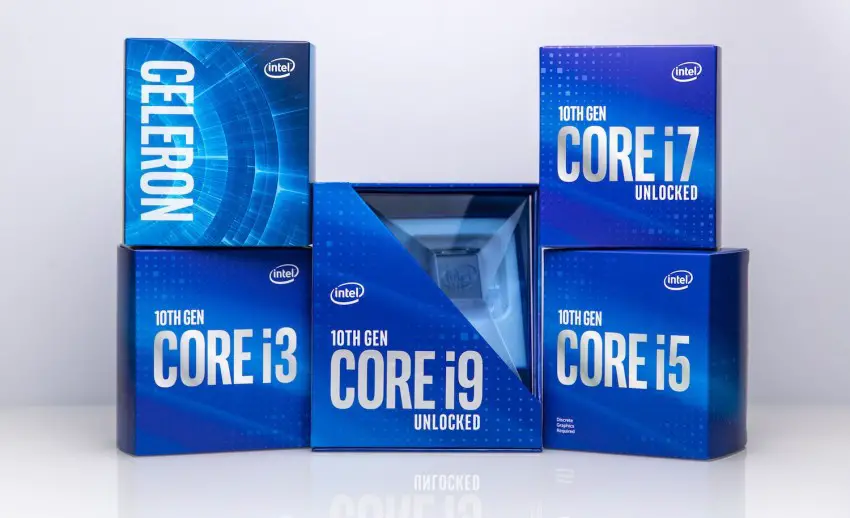
These will be the packages that will identify the 10th Gen processors, from the previous ones. At least, at first glance they cannot be confused with other generations. A fairly simple and sober packaging, only the family and the model are indicated, also in the corresponding cases, if it is unlocked or not.
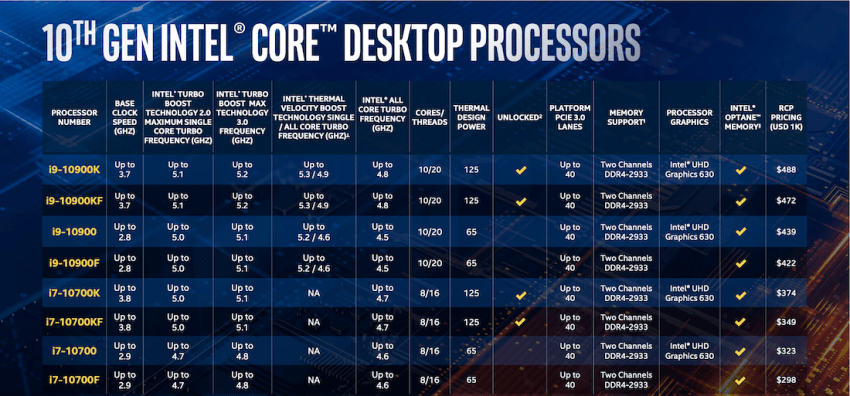
At the top of the table are the Core i7 and Core i9. Unlocked models have a 125W TDP, while the others have a 65W TDP, along with this, only these processors have official DDR4 2933MHz memory support.
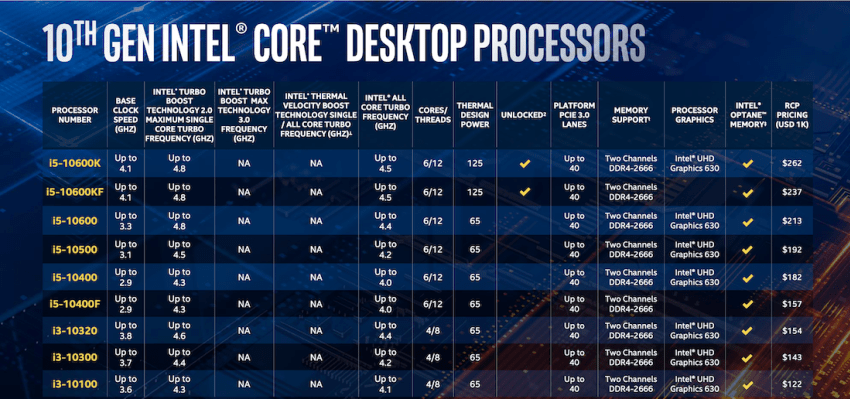
Looking at the list of Core i5 and Core i3 processors, you have that there will be no unlocked Core i3 model, something that would have been more attractive, since having a 4-core processor, unlocked gives greater benefits to users. Official memory support for these processors drops to DDR4 2666MHz.
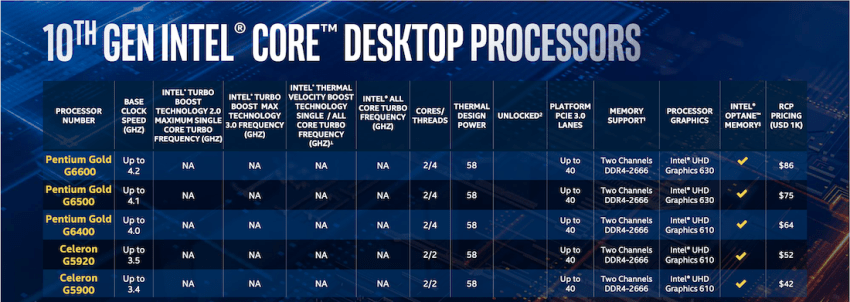
In the lower part, you have the Pentium and Celeron with a TDP of 58W, where there is no Turbo Boost, and like the Core i5 and i3, the memory support is DDR4 2666MHz. In addition to all these models, they have integrated graphics.
35W models
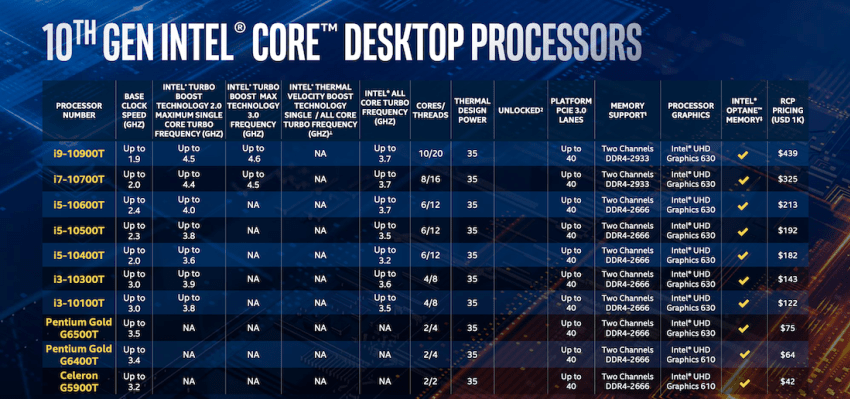
Finally, to close the range of processors, these models have a 35W TDP, oriented for low-power equipment, or small dimensions such as the Small Form Factor (SFF).
New Chipset and Socket
Accompanying the new processors, a new generation of chipsets arrives, one geared for maximum performance and the other for more “normal”, everyday use, or in a corporate environment. This chipset can be seen as an evolution of the previous 300 Series, but in this case, it also comes hand in hand with a new socket.
The 10th generation processors come for the LGA 1200 socket, which is physically and electrically different from the previous ones, so 10th gen processors may not be used on older boards, and 9th or earlier processors may not be used on boards with the 400 series chipset..
Intel Z490
This chipset is oriented to the maximum possible performance of these new processors. With this you can perform multi-gpu configurations, it has 24 PCIe 3.0 lines, and support for Intel XTU
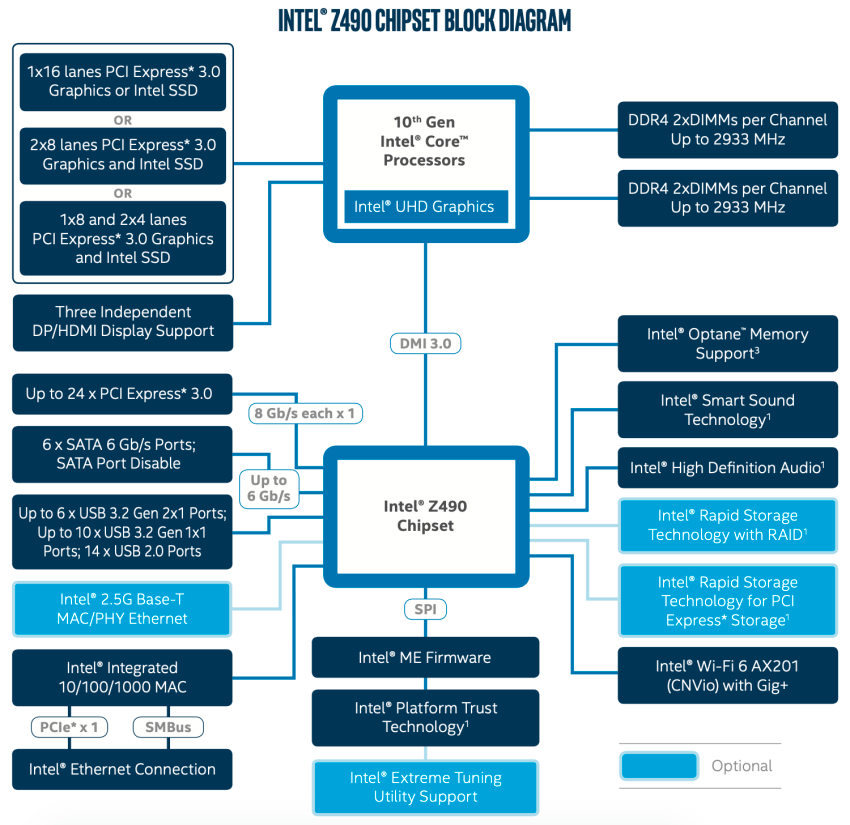
Obviously, the amount of extras and greater characteristics that the motherboard can have, will depend solely and exclusively on each manufacturer. As for example include WiFi6, or 2.5G Ethernet.
Intel H470
Because not everything is High Performance, there is also a new chipset for those users, or companies that want to upgrade to the new generation of processors, it is for them that the H470 chipset comes to the rescue.
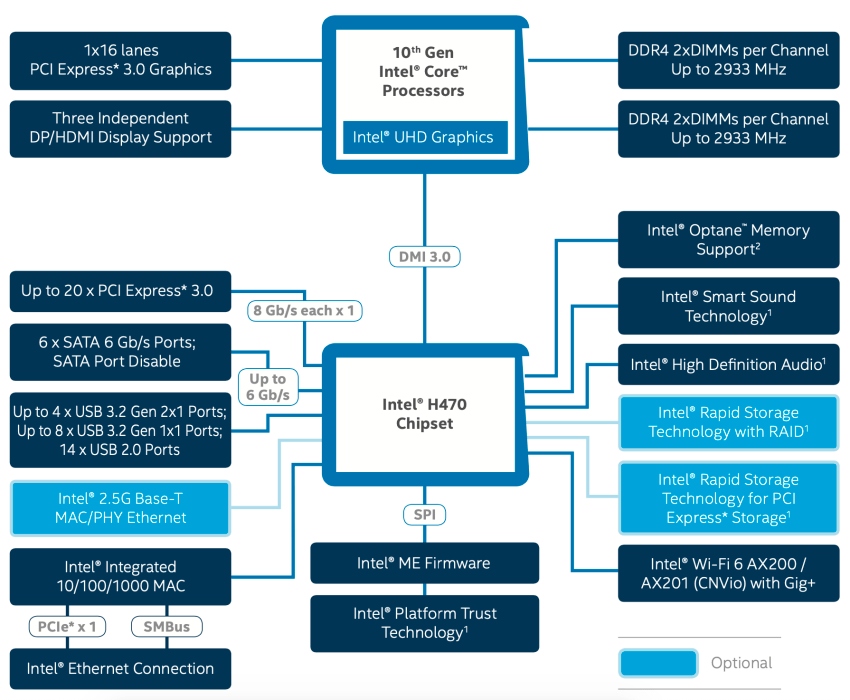
With practically the same features as the previous one, this chipset differs in that it does not support multi-gpu, nor does it have support for the Intel XTU tool, and limits the number of available PCIe 3.0 lines to 20.
This is for now, what we can show you and share about this new generation of Intel processors and chipsets. Stay tuned later when we can share information on your actual performance.





